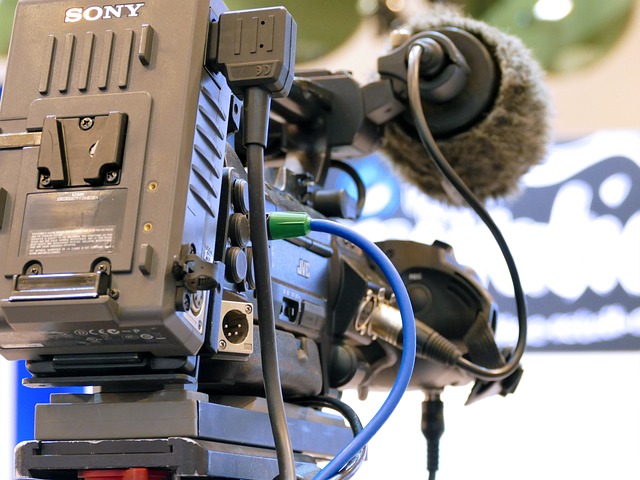What Skills Are Essential for Mastering Videography Techniques?
Videography has evolved from a specialized craft to an accessible skill that opens doors in numerous industries. Whether you're pursuing professional filmmaking, content creation, or corporate communications, mastering videography requires a combination of technical expertise and creative vision. The foundation lies in understanding camera operations, lighting principles, and composition techniques that transform ordinary footage into compelling visual stories.

Key Techniques for Effective Camera Control
Camera control forms the backbone of professional videography. Understanding manual settings allows videographers to adapt to various shooting conditions and achieve consistent results. Aperture control affects depth of field, enabling creators to isolate subjects or maintain sharp focus throughout the frame. Shutter speed management prevents motion blur while creating intentional effects when needed.
ISO sensitivity requires careful balance to maintain image quality while accommodating low-light situations. Modern cameras offer advanced features like focus peaking, zebra patterns, and histogram displays that assist in achieving optimal exposure and sharpness. Mastering these tools through hands-on practice develops the muscle memory essential for smooth operation during critical shooting moments.
Understanding Lighting Fundamentals in Videography
Lighting shapes the mood, atmosphere, and visual quality of every video project. The three-point lighting setup provides a foundation that includes key light, fill light, and back light to create dimensional subjects. Natural light offers cost-effective solutions but requires understanding of color temperature changes throughout the day.
Artificial lighting systems provide consistent control over intensity, direction, and color. LED panels, softboxes, and reflectors expand creative possibilities while addressing technical challenges. Color temperature matching ensures seamless integration between different light sources, preventing unwanted color casts that compromise professional appearance.
The Importance of Composition and Framing
Composition techniques guide viewers’ attention and enhance storytelling effectiveness. The rule of thirds creates visually appealing arrangements by positioning subjects along imaginary grid lines. Leading lines draw focus toward important elements while establishing depth within the frame.
Headroom and looking space considerations prevent awkward framing that distracts from content. Camera angles influence emotional response, with low angles conveying power and high angles suggesting vulnerability. Movement techniques like panning, tilting, and tracking shots add dynamic energy when executed smoothly and purposefully.
Audio Considerations and Sound Design
High-quality audio often determines viewer engagement more than visual elements. External microphones significantly improve sound capture compared to built-in camera audio. Lavalier microphones provide consistent voice recording for interviews, while shotgun microphones offer directional pickup for various scenarios.
Audio levels require monitoring throughout recording to prevent distortion or inadequate volume. Background noise reduction and proper acoustics contribute to professional results. Post-production audio editing allows for enhancement, but capturing clean sound initially saves significant time and maintains quality.
Post-Production Workflow and Editing Skills
Video editing transforms raw footage into polished final products. Understanding timeline-based editing software enables efficient organization and assembly of clips. Color correction and grading enhance visual consistency while establishing desired moods through strategic adjustments.
Transition techniques, text overlays, and graphics integration expand storytelling possibilities. Export settings optimization ensures appropriate file sizes and quality for intended distribution platforms. Backup strategies protect valuable work from technical failures during lengthy editing processes.
| Platform | Course Type | Duration | Cost Estimation |
|---|---|---|---|
| Udemy | Comprehensive Videography | 20-40 hours | $50-$150 |
| Coursera | Professional Certificate | 3-6 months | $39-$79/month |
| MasterClass | Industry Expert Instruction | Self-paced | $180/year |
| YouTube | Free Tutorials | Variable | Free |
| Local Colleges | Hands-on Workshops | 8-16 weeks | $200-$800 |
Prices, rates, or cost estimates mentioned in this article are based on the latest available information but may change over time. Independent research is advised before making financial decisions.
Equipment Selection and Budget Planning
Camera selection depends on intended use, budget constraints, and desired features. Entry-level DSLRs and mirrorless cameras provide excellent starting points for learning fundamental techniques. Professional camcorders offer specialized video features but require larger investments.
Supporting equipment includes tripods for stability, memory cards for storage, and batteries for extended shooting sessions. Building a complete kit gradually allows for spreading costs while gaining experience with each component. Used equipment markets provide cost-effective alternatives for beginners developing their skills.
Mastering videography techniques requires dedication to continuous learning and practical application. Technical skills provide the foundation, but creative vision develops through experimentation and studying successful examples. Regular practice with diverse projects builds confidence and expands capabilities across different shooting scenarios and client requirements.



